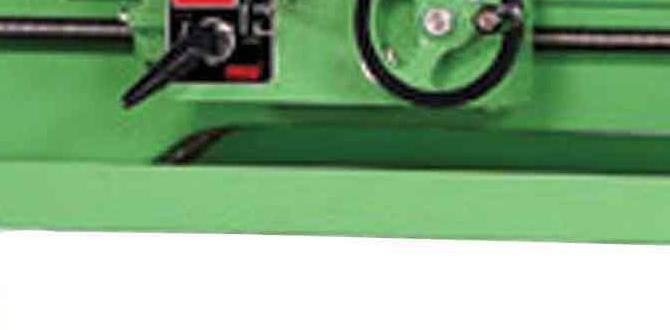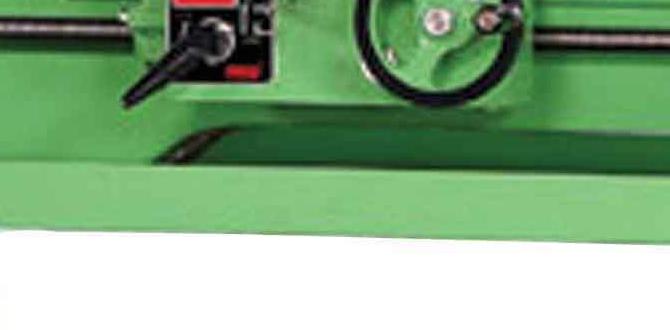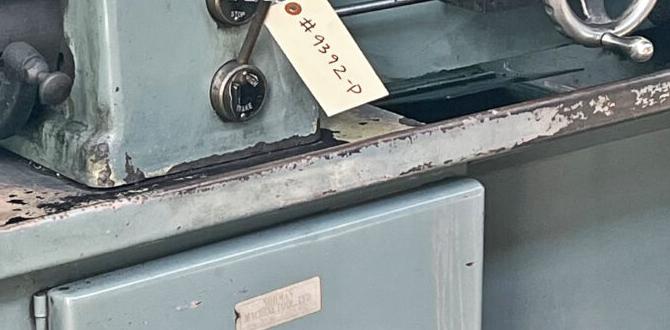Wood Lathe Duplicator: Stunning Spindles!
A wood lathe duplicator for spindles represents a significant leap forward for woodworkers seeking efficiency and precision when creating multiples of the same turned element. For centuries, furniture makers, artisans, and hobbyists have honed their skills on the wood lathe, transforming raw lumber into graceful curves and intricate details. However, replicating a complex spindle or a series of identical decorative elements could be a time-consuming and often frustrating endeavor. The beauty of a well-turned spindle lies in its symmetry and consistent form, qualities that can be challenging to achieve repeatedly by hand, especially for less experienced turners. This is where the ingenuity of the wood lathe duplicator truly shines, democratizing the creation of perfectly matched pieces.
Imagine the scenario: you’re crafting a grand staircase or a dining table, each requiring a dozen or more identical spindles. The traditional approach involves creating one master spindle and then meticulously measuring, marking, and shaping each subsequent piece to match. This process is prone to human error, leading to subtle variations that can be noticeable, and often requires significant skill and patience. The wood lathe duplicator offers a revolutionary solution, allowing you to transfer the exact shape of a master piece onto multiple blanks with remarkable accuracy.
How a Wood Lathe Duplicator Works for Spindles
At its core, a wood lathe duplicator functions by using a template or a master piece to guide the cutting tool. Most duplicator systems consist of a sliding carriage that moves along a guide rail. This carriage holds both your cutting tool and a “follower” or probe. As the carriage moves, the follower traces the contours of your master spindle, which is typically mounted alongside your workpiece. The follower is connected to a mechanism that dictates the depth and angle of the cutting tool, effectively mirroring the master’s shape onto the new wood.
There are various types of wood lathe duplicators available on the market, each with slightly different mechanisms. Some use a rigid tracing arm, while others employ more sophisticated pantograph systems that allow for scaling of the template. For turning spindles, the principle remains the same: a proven, perfectly shaped original dictates the form of every subsequent piece. This means that the time invested in creating a flawless master spindle is rewarded by the effortless reproduction of that perfection across your entire project. Whether you’re a professional cabinetmaker needing dozens of identical balusters or a hobbyist creating a matching set of decorative table legs, the efficiency gains are undeniable.
The Advantages of Using a Wood Lathe Duplicator for Spindles
The benefits of employing a wood lathe duplicator for spindles extend far beyond simple speed. Precision is arguably the most significant advantage. Once your master spindle is perfectly shaped and the duplicator is properly set up, every subsequent spindle will be an exact replica. This eliminates the inconsistencies that can arise from hand-shaping, ensuring a professional and polished finish to your project. For pieces that are viewed in close proximity, such as stair spindles, this level of uniformity is crucial.
Another key advantage is the reduction in setup and measuring time. Instead of constantly stopping to measure and compare, you can set up the duplicator once and then simply load and turn new blanks. This frees up mental energy and allows you to focus on other aspects of your woodworking. Furthermore, for those who may not have years of experience in intricate spindle turning, a duplicator can significantly lower the skill barrier. It empowers less experienced woodworkers to achieve professional-looking results, fostering confidence and encouraging further exploration of lathe work.
Economic considerations also play a role. While there is an initial investment in a wood lathe duplicator, the time saved on projects requiring multiple identical spindles can quickly offset the cost. For professional woodworkers, faster completion times translate directly into increased profitability. For hobbyists, it means more projects completed and less frustration, making the overall woodworking experience more enjoyable.
Choosing the Right Wood Lathe Duplicator for Your Spindle Needs
When selecting a wood lathe duplicator for spindles, several factors should be considered. Firstly, compatibility with your existing lathe is paramount. Ensure the duplicator’s mounting system and travel range are suitable for your lathe’s bed length and swing. The quality of construction is also important; look for sturdy materials and smooth-moving components that will withstand the demands of woodworking.
Consider the type of duplicator system. Some systems are simpler and more mechanical, while others offer more advanced features like scaling capabilities. For basic spindle duplication, a simpler mechanical system might suffice. However, if you envision needing to create scaled versions of your spindles in the future, a more advanced system might be a worthwhile investment. Read reviews, compare features, and, if possible, try to see a duplicator in action before making a purchase.
Maintenance is another consideration. Like any tool, a wood lathe duplicator will require occasional cleaning and lubrication to ensure optimal performance. Choose a system that is relatively easy to maintain. Finally, think about the types of spindles you intend to create. Some duplicators are better suited for longer, more slender spindles, while others can handle shorter, more robust pieces. Understanding your specific needs will guide you towards the most appropriate choice.
Tips for Achieving Stunning Spindles with a Duplicator
While a wood lathe duplicator automates much of the shaping process, achieving truly stunning spindles still requires attention to detail. The quality of your master spindle is the foundation of your success. Take the time to craft a flawless original, paying close attention to every curve and detail. Ensure it is perfectly straight and free of any imperfections.
Proper setup of the duplicator is critical. Make sure the master spindle and the workpiece are securely mounted and aligned correctly. The follower should make smooth contact with the master without digging in or skipping. Experiment with different cutting tools; sharp, high-quality tools will yield cleaner cuts and reduce the need for extensive sanding.
Don’t underestimate the power of finishing. Even the most perfectly replicated spindle will benefit from careful sanding and finishing. Start with coarser grits of sandpaper and progressively move to finer grits to achieve a smooth surface. Apply your chosen finish – be it varnish, oil, or paint – evenly and according to the manufacturer’s instructions. The right finish can elevate a beautifully turned spindle into a true work of art.
In conclusion, the wood lathe duplicator has transformed the way woodworkers approach the creation of identical turned elements. For those seeking to produce multiple perfectly matched spindles with speed and accuracy, this tool is an invaluable asset. From intricate staircases to decorative furniture components, the ability to effortlessly replicate a master design opens up a world of possibilities, ensuring that every turned piece is a testament to both precision and aesthetic appeal.




